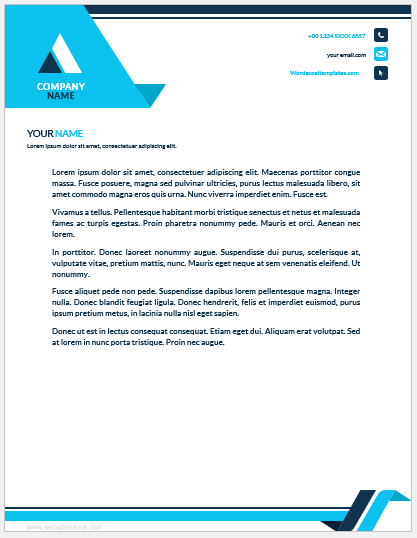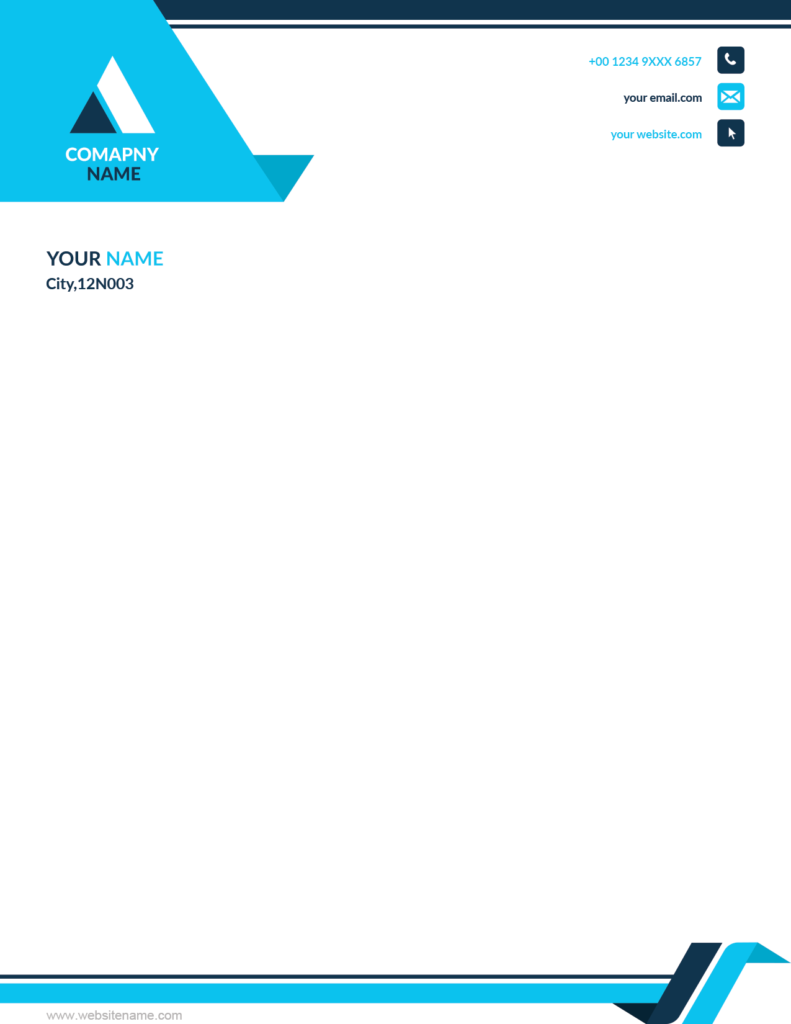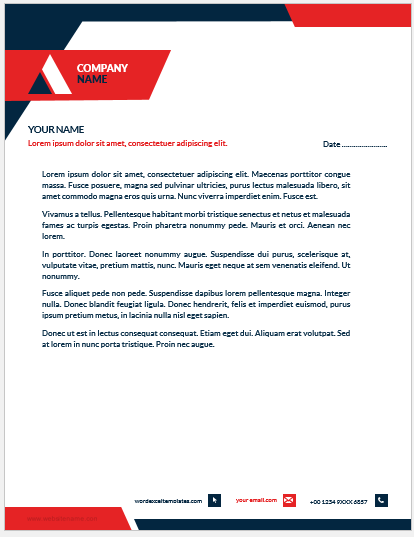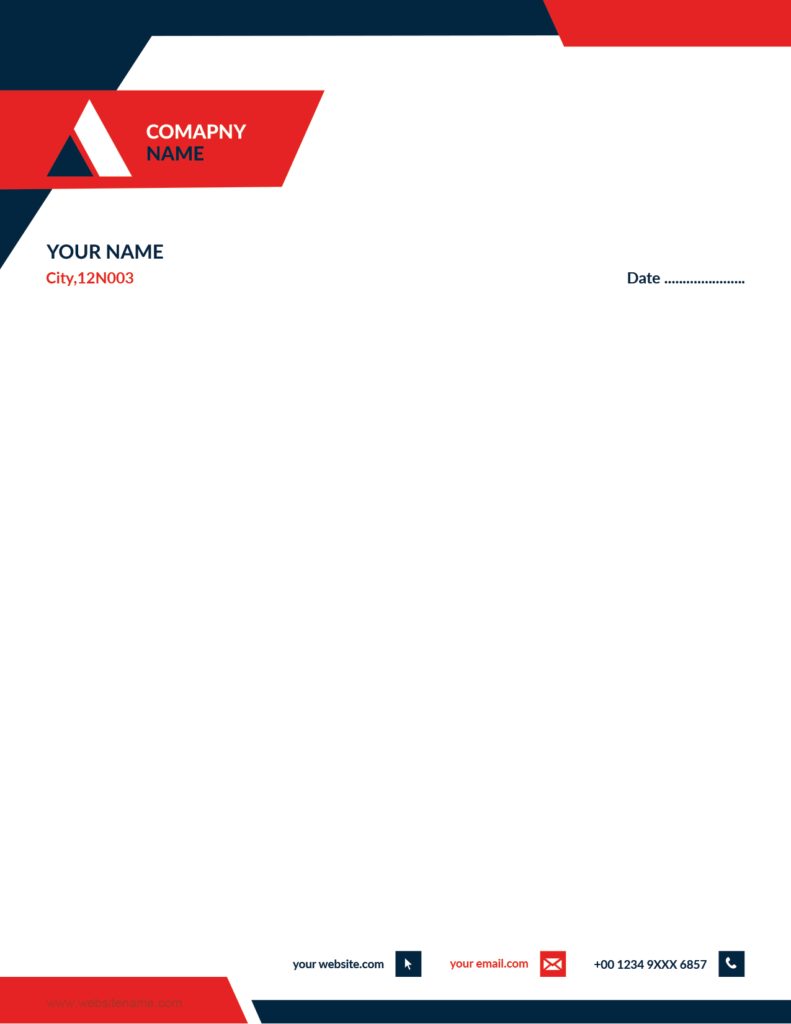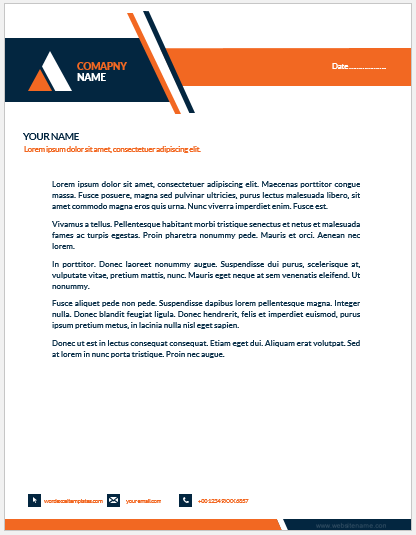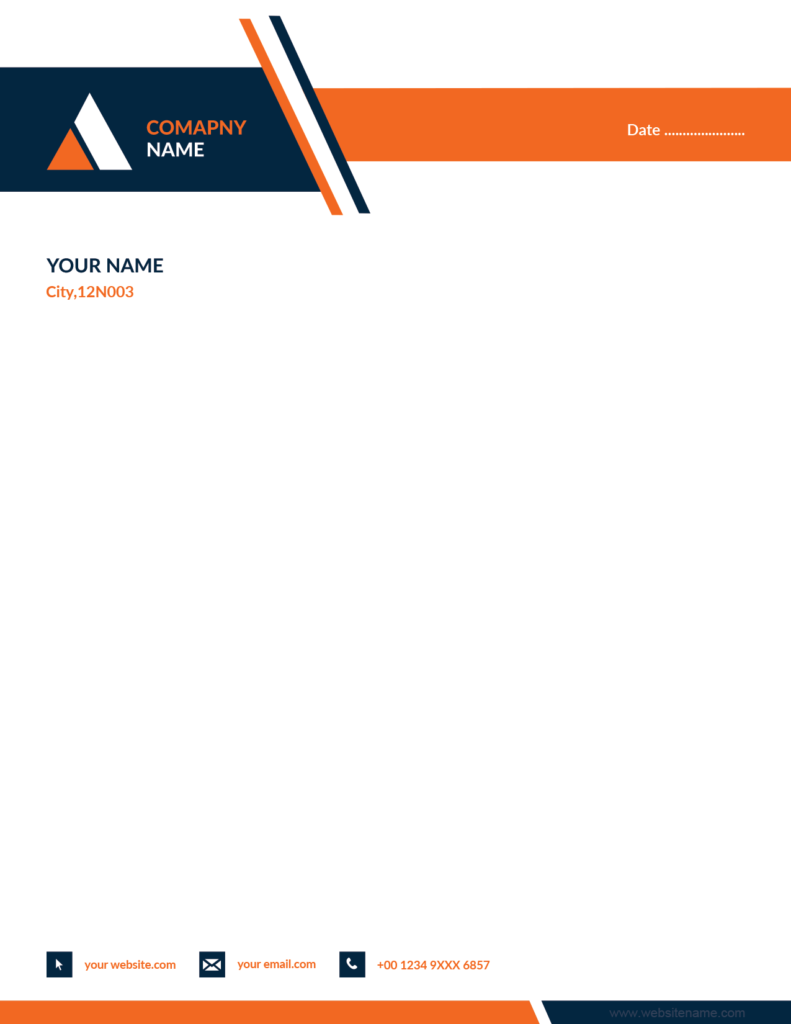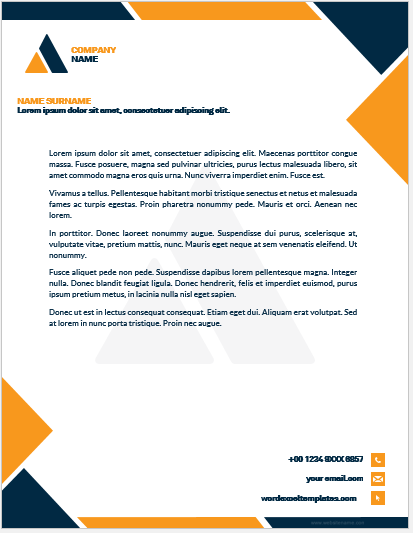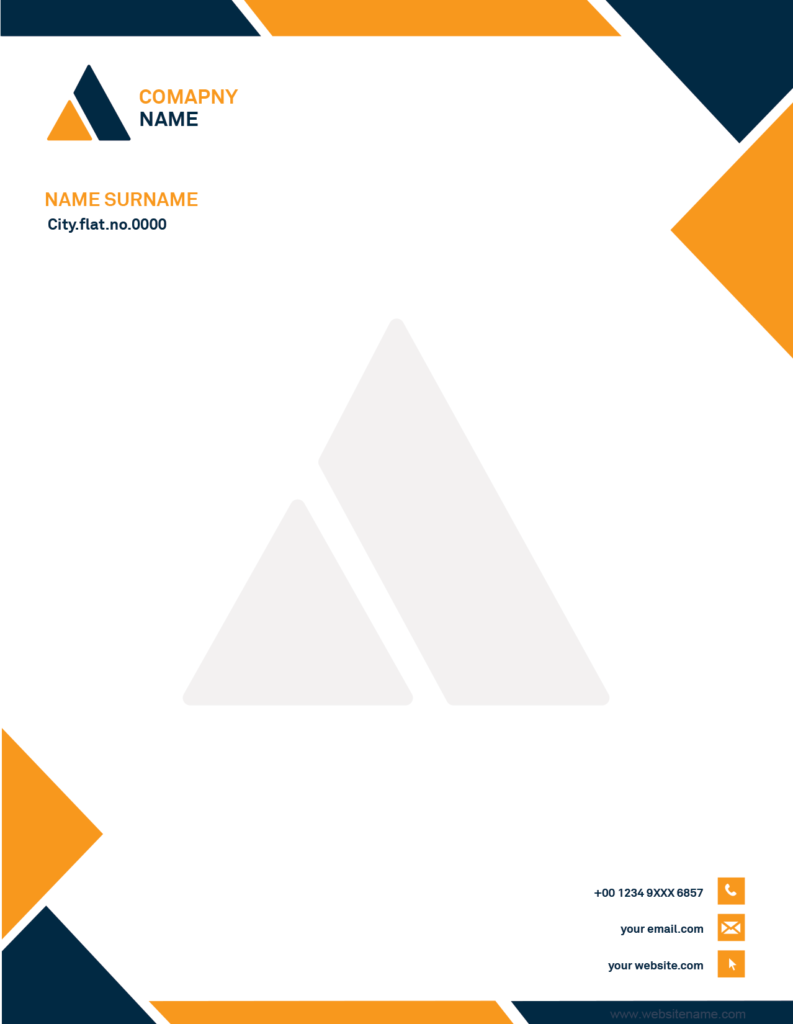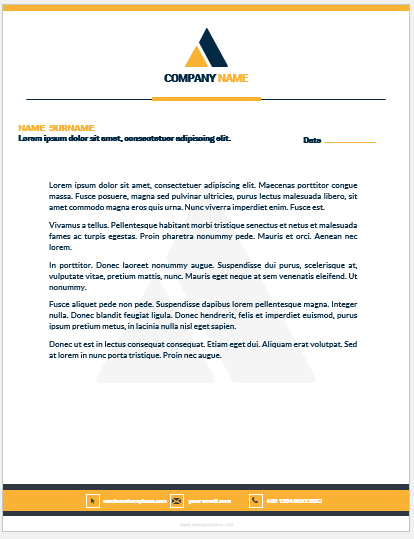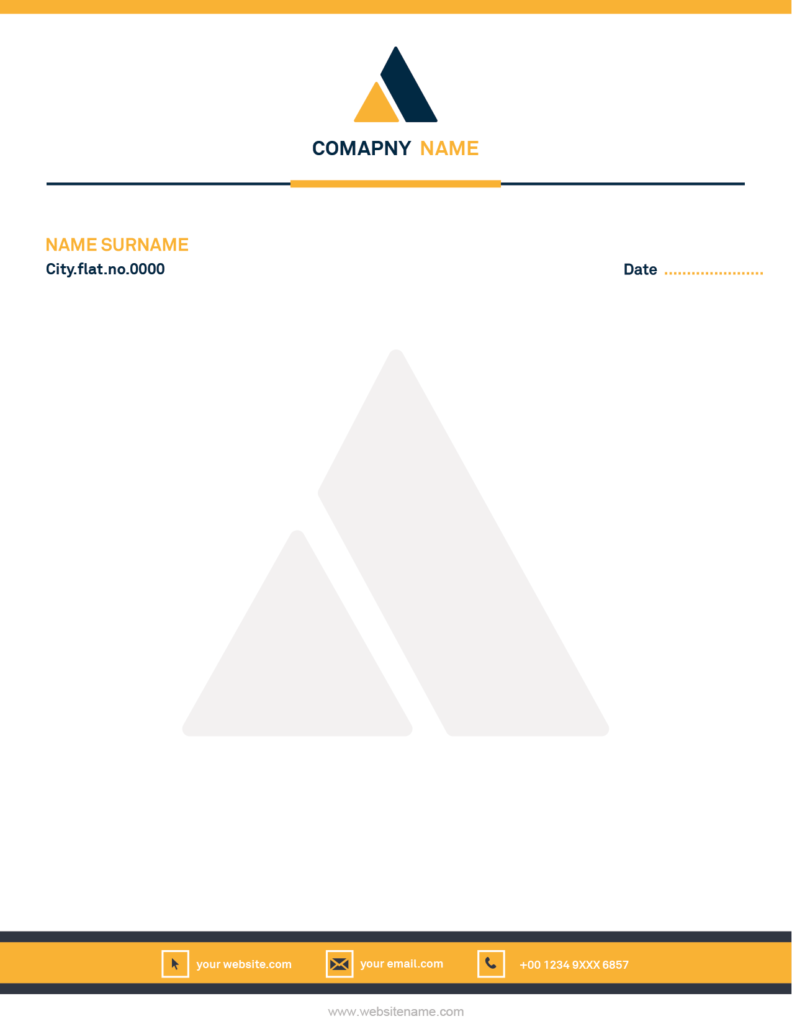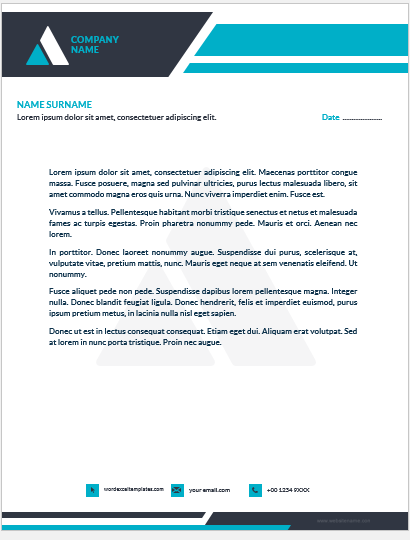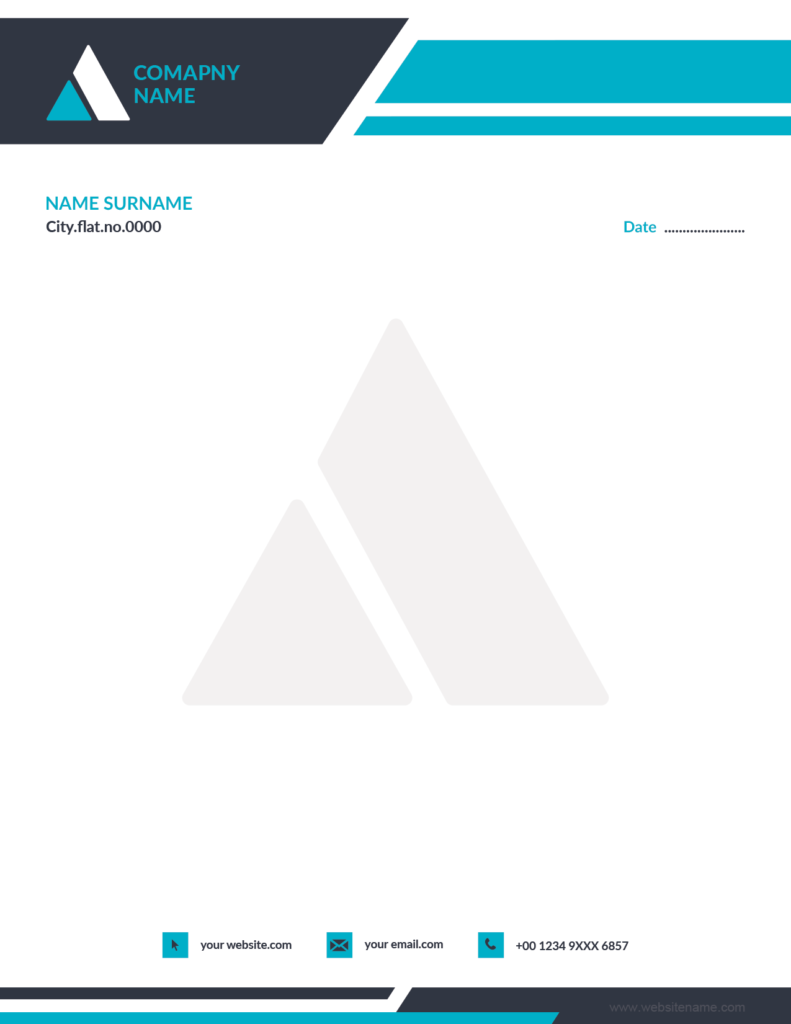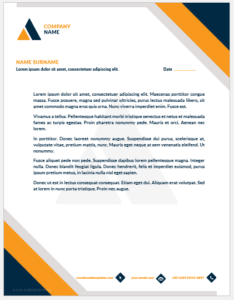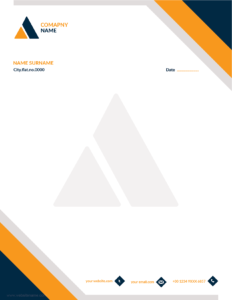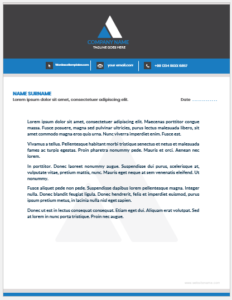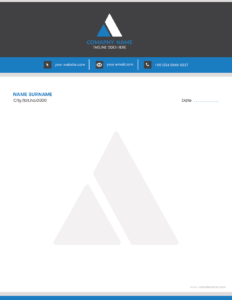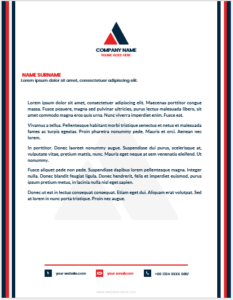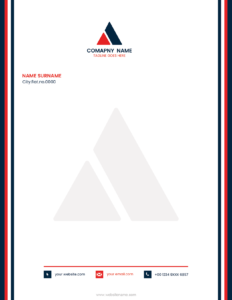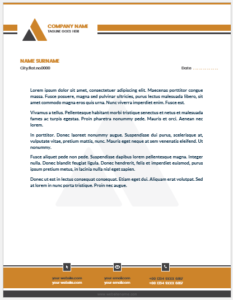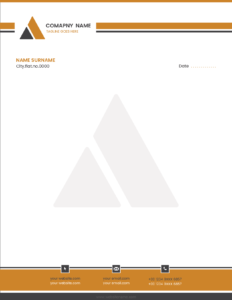A letterhead is an official printed document, on paper, used for formal and official correspondence, and is an essential item of business stationery. A letterhead could be used by any company or institute, for drafting any important notice, proposal, or reference.
The required text is printed over letterhead paper and is issued or written to an employee, client, potential/existing business partner, or any other officials. Thus, a letterhead is not an ordinary paper but rather an authentic and credible document used professionally. It portrays a brand image and is not only used for letters but also for envelopes and cards.
A letterhead is a header over a paper, which represents the company’s or business details. It often has a footer at the bottom of the paper, to provide the reader with additional information about the company, such as the contact information of other main/regional offices.
Letterheads are used for various reasons
A company or business officials can use the letterhead for various reasons, either for internal communication or for external stakeholder engagement. Below are mentioned a few purposes for which a letterhead is used:
- Employee Letters – an employer could use the letterhead to make an important announcement, issue a notice, or issue a reference/experience/recommendation letter, to a particular employee. On the other hand, the employees can use the letterhead to submit an application or a request to the employer
- Proposals – A company or business officials use the letterhead pad/paper to submit a proposal (partnership, grant, sponsorship, etc.) to a potential partner, sponsor, or donor
- Invoices – used by businesses to provide a complete breakdown of finances for the sale/purchase of certain item
- Legal agreements – Used by businesses while signing new contracts or memorandum of understanding, with terms and conditions defined. Thus, it helps in proving the credibility of the officials/parties signing the document, who could be held legally accountable in case of breaching/violating the defined terms
What about the design of a letterhead?
A letterhead is designed to consist of a company’s logo, complete name, and contact information of a particular company, including the contact number and postal address. A company could adopt any template as per the branding guidelines defined for the company. However, there are a few general essentials that should be part of business letterhead, as mentioned below:
- Logo – A logo is a visual description of a business. It reflects a brand image and describes the outlook and vision of a business. It needs to be clear enough that the reader can recognize a business instantly, with a first look at the letterhead. It is aligned and placed as per the branding guidelines
- Business Name – the business name needs to be placed on top of the letter so that the reader gets an idea of the sender. The letterhead is a great marketing tool, used by businesses to provide the reader with information about the services being offered by the particular business. A potential partner or client can choose to filter the need to read a letter by the brand name and impression the business has. So a name should be mentioned at should be the first thing, a reader reads
- Contact Information – The letterheads provide complete contact information, by mentioning the contact numbers, postal addresses, and email IDs. The business owners may opt for either mentioning the details of the main office/head office or may choose to provide details of regional offices which can be of significant importance for the potential clients/ partners existing in the vicinity of a particular regional office
Components of a letterhead
Though the components of letterhead are important to serve the purpose, there are certainly other factors that need to be considered while designing the template of a letterhead, such as:
- Color – the color speaks a lot about a business when viewed from a designer’s lens. Hence, striking and vibrant colors should be used for a letterhead, which reflects the brand image and is not sharp, vivid, or unattractive
- Font – the font, font size, and styling should complement the branding guidelines of the business, but at the same time, it should stand out from the rest of the text of the letter. The font of the letterhead must not dissolve in the content of the letter
- Format – the logo and text, comprising the details of the business, should be placed in a way that a reader does not find it hard to locate the name or contact details of the business
- Size and resolution – High-resolution images should be used for the logo so that it does not fade away upon printing. The size of the template should be designed in a way that it fits perfectly for all kinds of page sizes, letters, or envelopes
- Paper Quality – the quality of the paper which serves as a letterhead pad/paper is equally important to sustain the brand image. The low-quality paper reflects an unprofessional outlook and may get torn apart before even reaching to destination location/reader
A business letterhead could be designed or printed using online resources, which provide users with an option to choose from existing letterhead templates. The users can customize the letterhead, featured on websites, as per their requirements, and can later download and print the template.
Another easier way to design a basic letterhead template could be the use of MS Word. The user can pick up the letterhead from existing templates, from “Available Templates” which are displayed when a new document is opened.
For manual designing of the template in MS Word, the user can open a new document on MS Word, and insert the Header and Footer by clicking the Insert tab in MS Word. Once the header is added and displayed on the top of the document, the user can edit it as required by adding a logo and text. If required, the same can be done to add a Footer which is displayed at the bottom of the document. When the editing completes, the user saves the file in doc. format, and can add the content of the letter later, as per the need.
Sample Templates
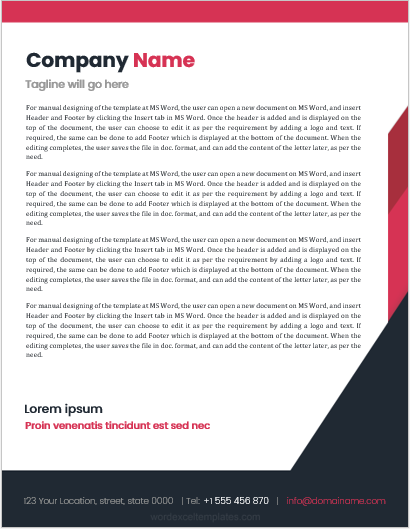
File: Word (.docx) 2007/+
Size 106 KB
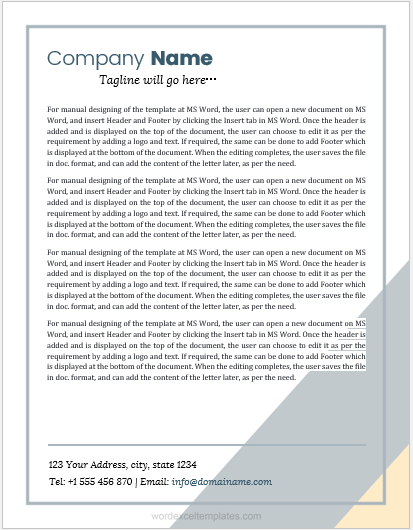
File: Word (.docx) 2007/+
Size 106 KB
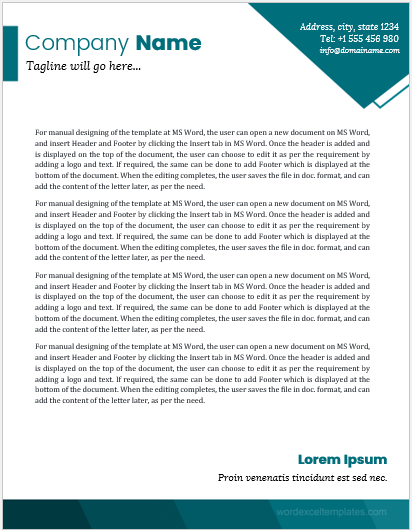
File: Word (.docx) 2007/+
Size 106 KB
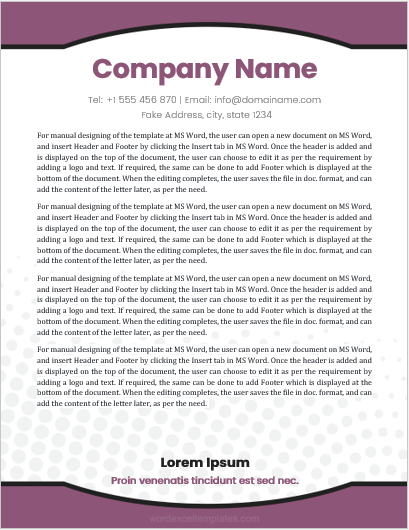
File: Word (.docx) 2007/+
Size 106 KB
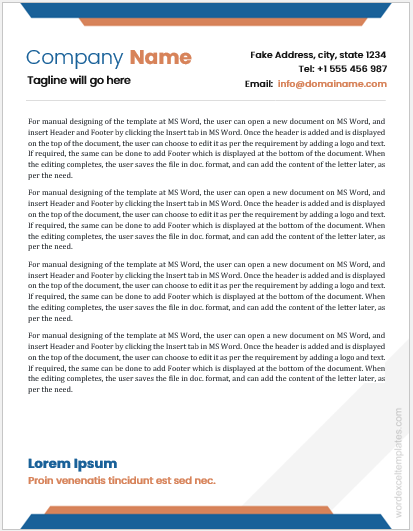
File: Word (.docx) 2007/+
Size 106 KB
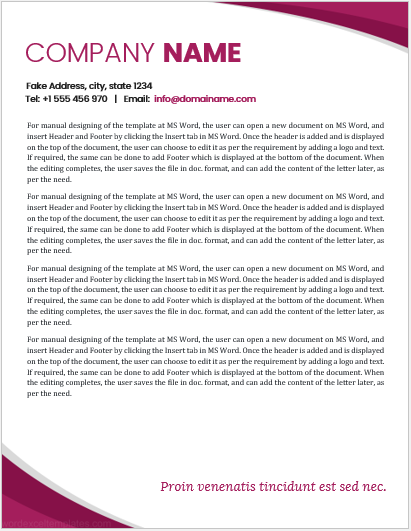
File: Word (.docx) 2007/+
Size 106 KB
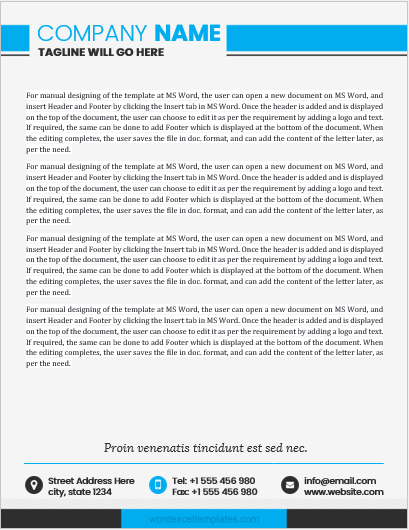
File: Word (.docx) 2007/+
Size 106 KB
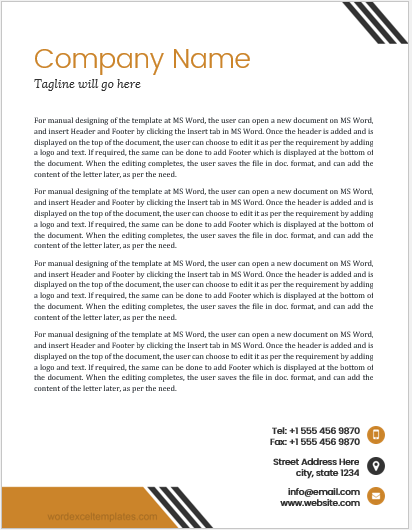
File: Word (.docx) 2007/+
Size 106 KB
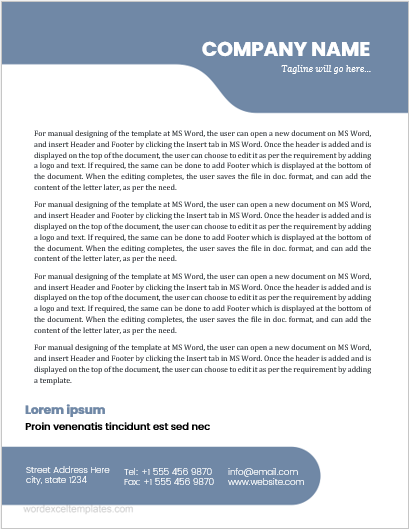
File: Word (.docx) 2007/+
Size 106 KB
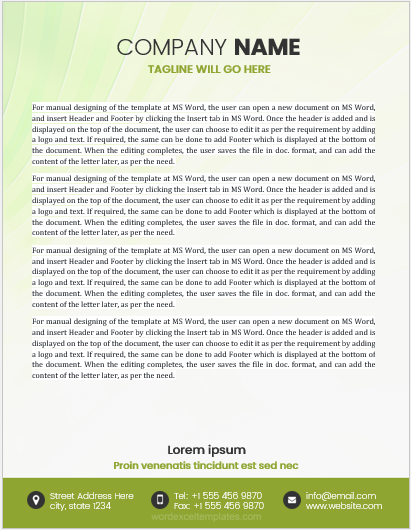
File: Word (.docx) 2007/+
Size 106 KB
- Quarterly Tax Payment Tracker
- Payroll Tracker for Excel
- Delivery Route Optimization Worksheet
- Energy Consumption Monitoring Worksheet
- Return on Investment (ROI) Calculator
- Investment Portfolio Tracker
- Equipment Utilization Worksheet
- Emissions Monitoring Worksheet
- Monthly Utility Consumption Worksheet
- Sales Tax Calculation Sheet
- Fixed Asset Register Template
- Advance Salary Tracker
- Benefits and Deductions Worksheet
- Capital Expenditure Tracker Template
- Departmental Budget Allocation Sheet
